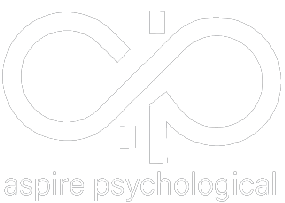Introduction:
If you are concerned that you are struggling with anxiety and may need professional help, this blog is for you! Anxiety is an extremely prevalent challenge for people of all ages and stages.
Anxiety is a natural and normal response to stress or perceived threats. Our brains are designed to protect us. Therefore, the brain has systems to monitor threats and respond accordingly. *However, when this response becomes disproportionate or chronic, it can evolve into a mental health disorder. *
Recognizing the symptoms is crucial for early intervention and effective treatment.
NOTE: A knowledgeable and experienced psychologist may help provide effective intervention and treatment to address the anxiety itself, not just the symptoms. This approach may resolve all the symptoms and lead to a significantly improved lifestyle.
Anxiety can present across multiple domains: physical, cognitive, emotional, and behavioral.
Physical Symptoms
Muscle Tension:
Anxiety often manifests in the body through heightened muscle tension, leading to aches and pains especially in the neck, shoulders and back. Chronic tension can contribute to conditions such as tension headaches, migraines, stomachaches, nausea, diarrhea, or irritable bowel syndrome (IBS).
Fatigue:
Individuals with anxiety may experience persistent fatigue due to the heightened state of alertness and the strain on the body’s resources.
Restlessness:
Restlessness is a common physical manifestation of anxiety, characterized by an inability to sit still or a constant need to fidget.
Insomnia:
Sleep disturbances, including difficulty falling asleep or staying asleep, are prevalent symptoms of anxiety that can exacerbate the overall impact on well-being.
The body’s “fight or flight” response is activated during periods of anxiety, causing the heart rate to increase. This can result in palpitations or a sensation of a racing heart.
Shortness of Breath:
Anxiety can lead to hyperventilation or shallow breathing, causing a feeling of breathlessness or tightness in the chest. This symptom is common, especially during panic attacks.
Sweating:
Excessive sweating is a physical response to anxiety, often occurring on the palms, underarms, or forehead. This can be particularly noticeable in stressful situations.
Trembling or Shaking:
Anxiety can manifest as trembling or shaking, especially in the hands or other parts of the body. This physical symptom is a result of the body’s response to heightened stress levels.
Dizziness or Lightheadedness:
Anxiety may cause feelings of dizziness or lightheadedness. This can be attributed to changes in blood flow and circulation associated with the stress response.
Cognitive Symptoms
Excessive Worry:
Anxiety often manifests as persistent and excessive worry about a wide range of situations, both real and hypothetical, often beyond what the situation warrants.
Racing Thoughts:
Individuals with anxiety may experience a rapid influx of thoughts, making it challenging to focus on specific tasks or engage in present-moment awareness.
Cognitive Distortions:
Anxiety can lead to distorted thinking patterns, including catastrophizing, overgeneralization, and black-and-white thinking, which contribute to heightened feelings of apprehension.
Difficulty Concentrating:
When a person is worrying, it is difficult to focus or concentrate on the tasks at hand.
Emotional Symptoms:
Irritability:
Anxiety can manifest as irritability, making individuals more susceptible to frustration and impatience, even in typically manageable situations. This is especially true in children.
Feelings of Dread:
A pervasive sense of impending doom or dread is a common emotional symptom, contributing to a constant state of unease.
Fear of Losing Control:
Anxiety may be accompanied by an intense fear of losing control or going “crazy,” adding an additional layer of distress.
Panic Attacks:
Sudden and intense episodes of fear, known as panic attacks, are often accompanied by physical symptoms such as chest pain and shortness of breath.
Behavioral Symptoms:
Avoidance:
Individuals with anxiety may develop avoidance behaviors, steering clear of situations or activities that trigger anxiety, which can impact daily functioning.
Compulsive Behaviors:
In an attempt to alleviate anxiety, individuals may engage in repetitive and compulsive behaviors, such as checking or counting rituals.
Social Withdrawal:
Anxiety can lead to social withdrawal as individuals may fear judgment or scrutiny, hindering their ability to engage in social interactions.
Conclusion:
Understanding the various symptoms associated with anxiety clarifies your symptoms and determines the next steps. By recognizing the symptoms, we can pave the way for early intervention, effective treatment, and improved mental well-being for individuals navigating the intricate landscape of anxiety.





